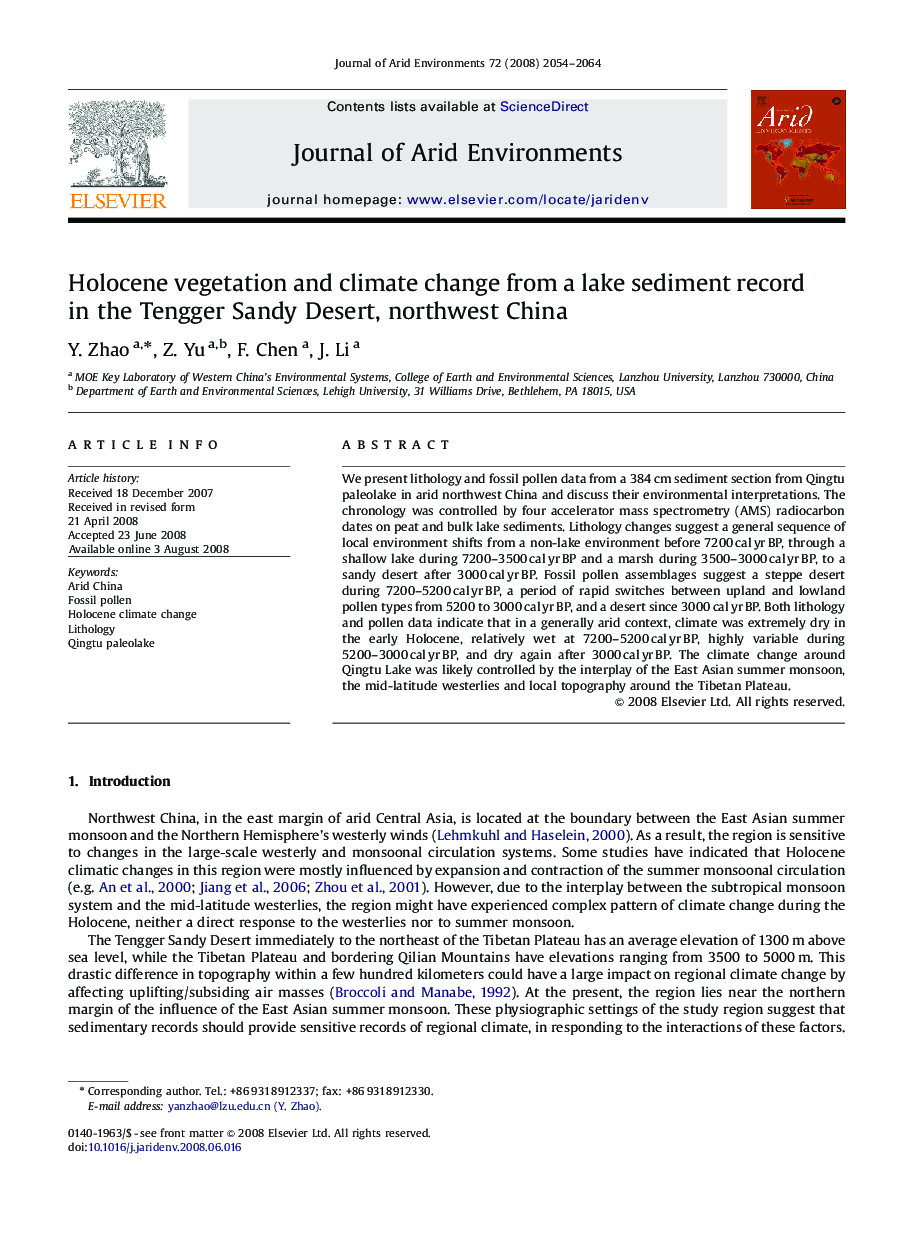| Article ID | Journal | Published Year | Pages | File Type |
|---|---|---|---|---|
| 4394084 | Journal of Arid Environments | 2008 | 11 Pages |
We present lithology and fossil pollen data from a 384 cm sediment section from Qingtu paleolake in arid northwest China and discuss their environmental interpretations. The chronology was controlled by four accelerator mass spectrometry (AMS) radiocarbon dates on peat and bulk lake sediments. Lithology changes suggest a general sequence of local environment shifts from a non-lake environment before 7200 cal yr BP, through a shallow lake during 7200–3500 cal yr BP and a marsh during 3500–3000 cal yr BP, to a sandy desert after 3000 cal yr BP. Fossil pollen assemblages suggest a steppe desert during 7200–5200 cal yr BP, a period of rapid switches between upland and lowland pollen types from 5200 to 3000 cal yr BP, and a desert since 3000 cal yr BP. Both lithology and pollen data indicate that in a generally arid context, climate was extremely dry in the early Holocene, relatively wet at 7200–5200 cal yr BP, highly variable during 5200–3000 cal yr BP, and dry again after 3000 cal yr BP. The climate change around Qingtu Lake was likely controlled by the interplay of the East Asian summer monsoon, the mid-latitude westerlies and local topography around the Tibetan Plateau.
